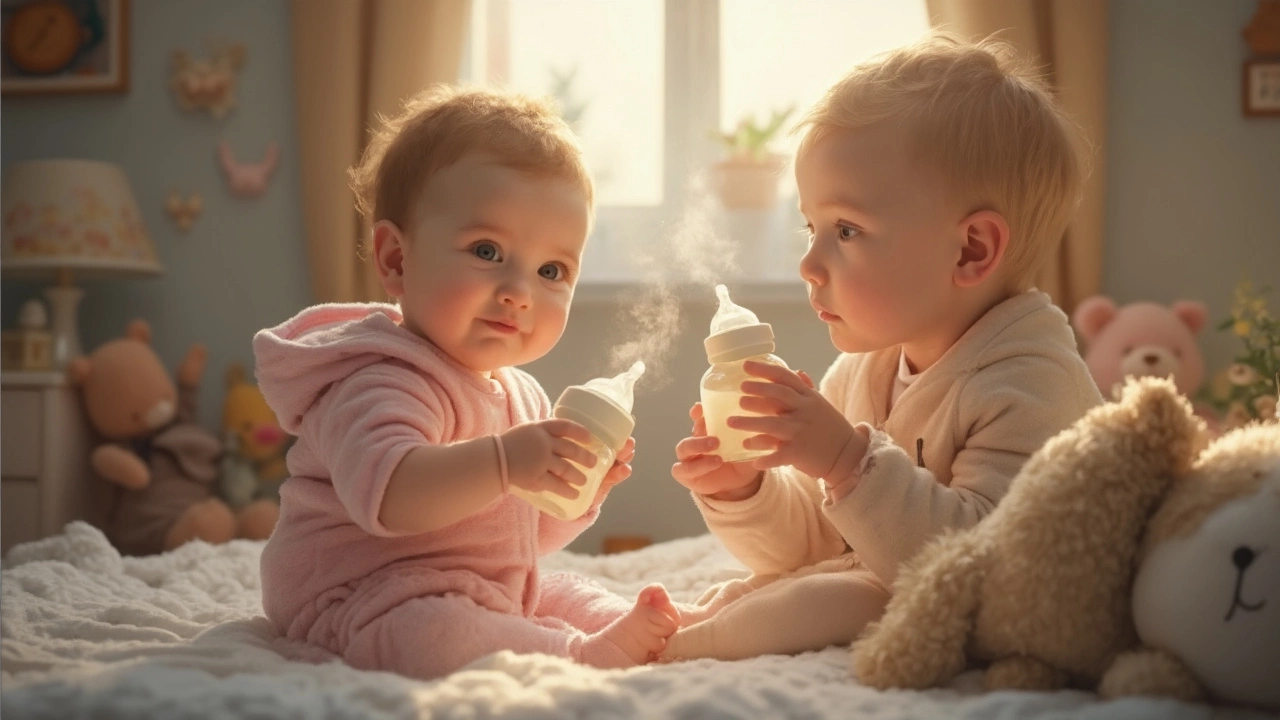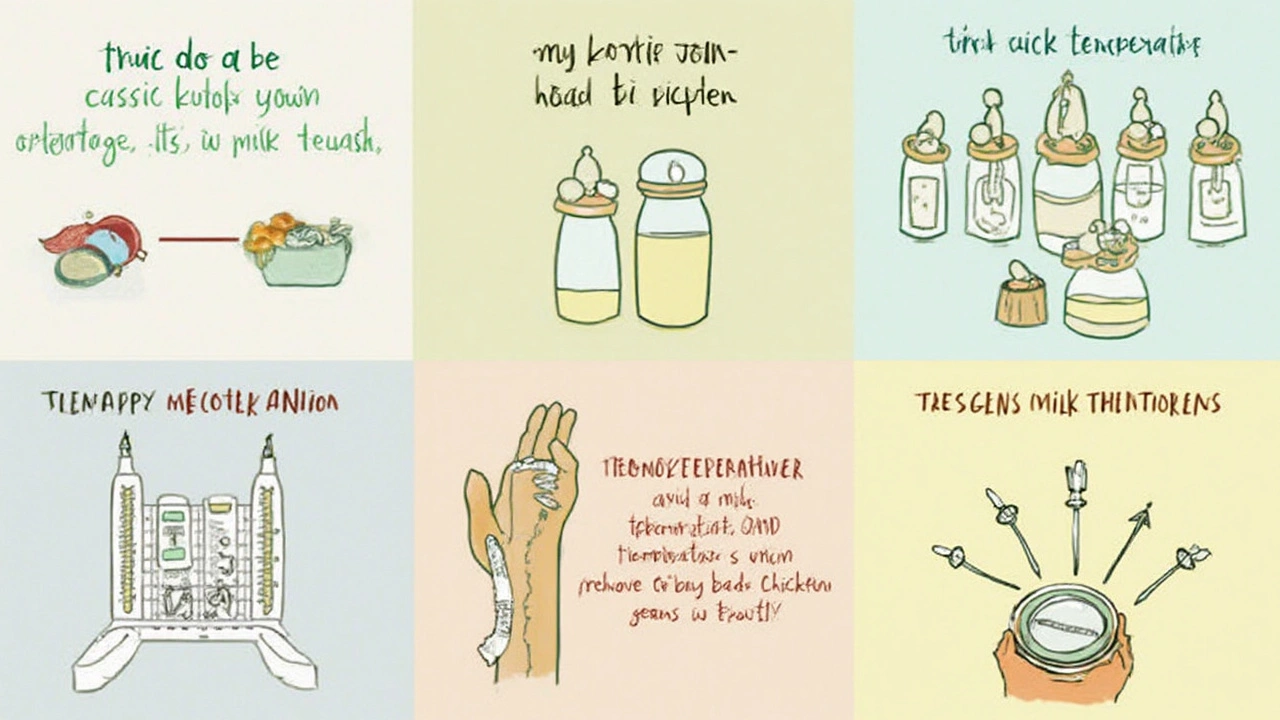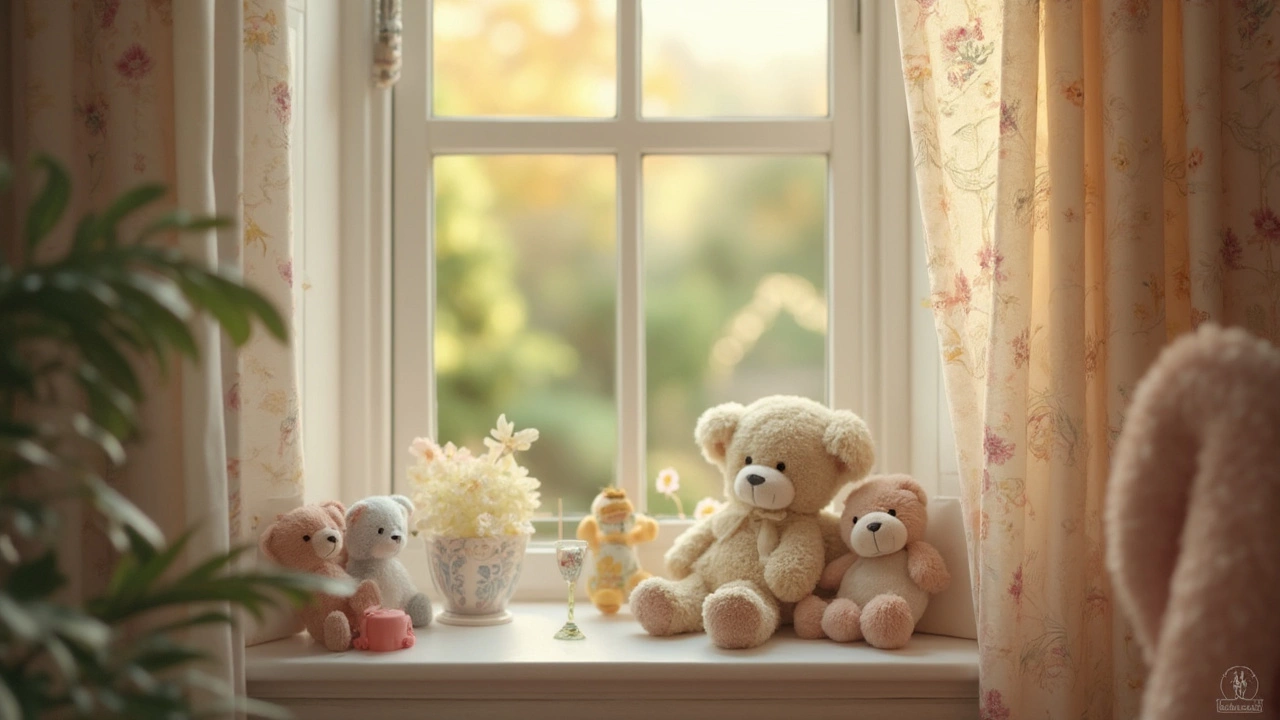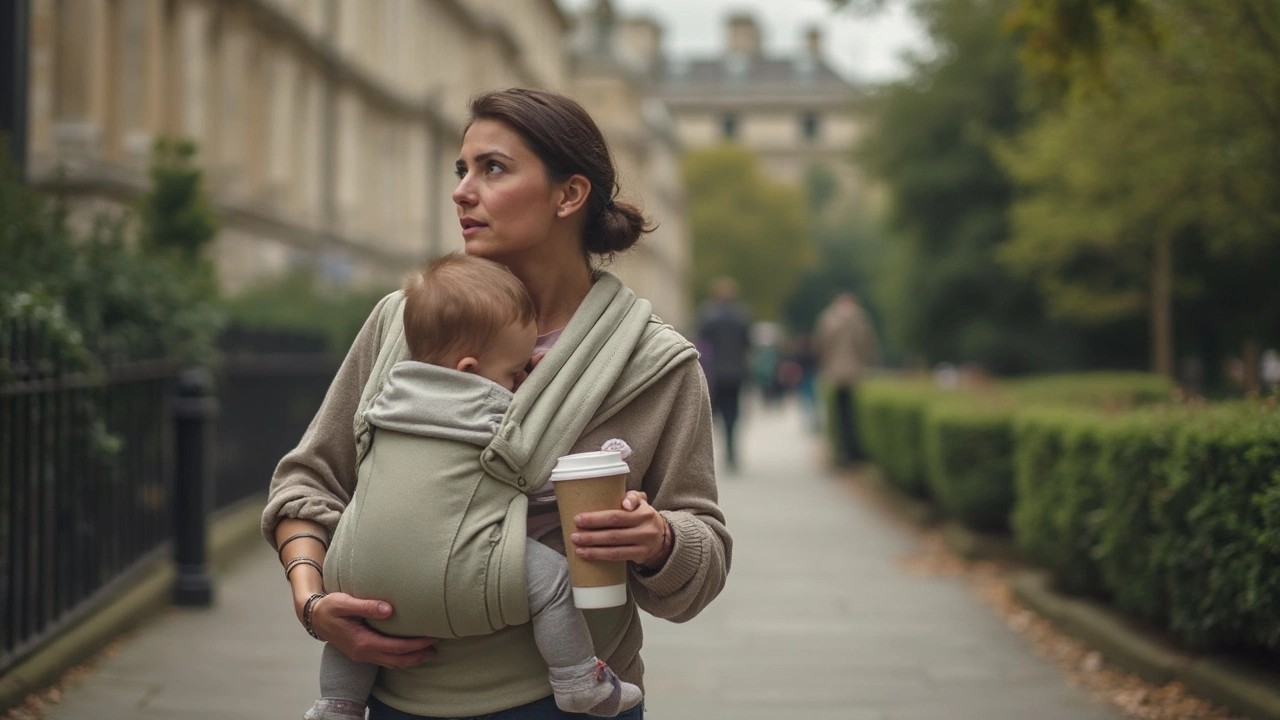Do Babies Prefer Warm or Cold Bottles?

You've probably stood in the kitchen at 2 a.m., bottle in hand, whispering 'Is this warm enough, or too hot?' Turns out, you're not alone—parents everywhere wonder if the bottle's temperature actually matters to their baby. The short answer: most babies seem to like their milk about the same temperature as breast milk, which is close to body temp—around 98°F (37°C). That’s not a hard rule, though. Plenty of babies go straight for cold bottles without drama, especially as they get bigger.
What's truly important is safety. If a bottle is too hot, it can burn your baby's mouth—or at the very least, make them refuse the feed. Too cold? Most newborns might fuss or flat-out reject it because the colder temperature feels 'off.' But here's the kicker: there’s no medical reason milk has to be warm for safe feeding, as long as it's prepared and stored right. It’s a preference thing, not a health thing.
- The Science Behind Bottle Temperature
- Why Warmth Matters (Or Doesn’t) for Your Baby
- Safe Ways to Warm Bottles
- Real-Life Tips for Happier Feeding
The Science Behind Bottle Temperature
So, why do people obsess over the temperature of baby bottles in the first place? It mostly comes down to mimicking breast milk since it comes out warm and feels natural for a newborn. Research from pediatric associations shows that breast milk is roughly 98-99°F (37°C). Babies, especially newborns, tend to prefer milk at this temperature because it feels familiar and goes down easier.
What actually happens when a baby drinks milk that’s too hot or too cold? Too hot—and you risk burning their delicate mouth or throat. Too cold—and the feed might be rejected, or the baby could swallow uncomfortably. But let’s not overthink it: once babies hit a few months old, many will happily take cooler bottles, especially if parents are trying to save time or transition to sippy cups.
Now, there’s no evidence that bottle temperature affects nutrition. Whether you heat formula or serve it cold from the fridge, the nutrients stay the same. Taste and texture changes slightly, but not enough to make a real health difference.
Check out these data points about baby bottles and feeding habits:
| Age Group | Preferred Bottle Temp | Rejection Rate (if too cold) |
|---|---|---|
| Newborns (0-2 months) | Warm (96-100°F) | High (~70%) |
| Infants (3-6 months) | Warm or Room Temp | Medium (40-50%) |
| Older Babies (6+ months) | Room Temp or Cold | Low (<20%) |
If you want a general guide, think: start with body temp for new babies, then try room temp as your little one grows. Just remember, baby’s preference matters more than any unbreakable rule.
Why Warmth Matters (Or Doesn’t) for Your Baby
Most newborns are used to getting their meals straight from the source—breast milk—so they're wired to expect milk that's about the same temperature as a parent's body. That puts the sweet spot for comfort right around 98°F (37°C). When you give formula or pumped milk straight from the fridge, it's way colder than what they're used to. Some babies will grimace or push the bottle away, especially early on.
But here’s the real scoop: there’s no medical reason a baby bottle has to be warm. Babies can safely drink cold milk, as long as it's prepared and stored properly. Warmth is really about comfort and routine. A lot of babies just relax and feed better with a warm bottle because it feels familiar. This is especially true for younger babies or those who switch between breast and bottle.
Things often shift as your baby gets older. By the time babies hit 3–4 months, many are less picky. In fact, a study published in 2016 found that about 41% of older babies in daycare took cold bottles without any issue after just a few days of trying.
Here's a handy look at bottle temperature and baby responses:
| Temperature | Baby's Typical Reaction |
|---|---|
| Body temp (98°F/37°C) | Most likely to accept easily, similar to breastfeeding |
| Room temp (68-72°F/20-22°C) | Some babies take it fine, others may hesitate |
| Cold (fridge temp, 39°F/4°C) | Newborns often refuse; older babies might accept |
If your baby is refusing the bottle, temperature might be the culprit. Try a little experiment: offer a few sips at different temps to see what they actually prefer. It can save you a ton of stress. And if your little one happens to guzzle a cold bottle, that’s totally okay—no harm done.

Safe Ways to Warm Bottles
Warming baby bottles doesn't have to be tricky, but doing it safely definitely matters. The main thing to avoid? Hot spots that come from microwaving—those surprise blasts of heat can burn your baby's mouth fast. Plus, microwave warming messes with nutrients in formula or breast milk. Experts agree: just skip the microwave.
The top ways parents safely warm bottles are simple and don’t need fancy gear. Here's what actually works:
- Bottle warmers: Super handy, especially at 3 a.m. when you're running on fumes. They warm bottles evenly, usually to the right temp—around 98°F (37°C). Always double-check with your wrist before feeding.
- Warm water method: Fill a bowl or mug with warm (not boiling) water. Place the bottle in and leave it for a few minutes, swirling gently now and then. This evenly heats the milk without any hot spots.
- Tap water trick: Hold the bottle under warm running water and rotate it for 1-2 minutes till it feels warm—not hot—to the touch. Easy, fast, and safe.
After warming, shake the bottle lightly to blend the milk and test the temp by squirting a drop or two on your wrist. You want it to feel lukewarm—about body temperature, never hot. Don’t rely just on touch if you’re not sure—use a digital thermometer for extra peace of mind. Keeping milk below 104°F (40°C) is key, since higher temps can hurt nutrients and cause burns.
| Age Group | Temp Range °F | Temp Range °C |
|---|---|---|
| Newborns | 98-100 | 37-38 |
| Older Infants | Same or Cooler | Same or Cooler |
One more thing: never leave a warmed bottle sitting out for more than 2 hours, since bacteria love warm milk. If your baby didn’t finish it, toss what’s left. Warming bottles is all about finding what fits your routine while keeping feeding safe and easy.
Real-Life Tips for Happier Feeding
When it comes to smoother bottle feeding, sometimes the smallest changes make all the difference. Here are some tricks you’ll wish you tried sooner:
- Test the Temperature: The old wrist test works. Drip a little milk on the inside of your wrist—it should feel just warm, not hot. If it’s cold and your baby isn’t fussing, don’t sweat it. If they seem unhappy, try warming it a bit more.
- Let Your Baby Decide: Some babies don’t care about the bottle temperature. If your child drinks happily, you’re good. This means less time waiting for a bottle warmer and more time for snuggles or sleep.
- Be Consistent: If you always offer a warm bottle, your baby might protest a cold one later. Mixing things up now and then teaches them to be a little more flexible with temperature, which is handy when you’re on the go.
- Don’t Reheat Multiple Times: Once a bottle has been warmed and your baby has tasted it, toss any leftovers after one hour. Bacteria can grow quickly in formula or breastmilk sitting at room temperature.
- Easy Outings: If leaving the house, fill the bottle with room temp or cold prepped formula, then warm as needed by running it under hot tap water. Skip the microwave—it can cause dangerous hot spots. There are portable bottle warmers out there, but a simple bowl of hot water usually works just fine.
- Watch Their Cues: Signs like turning their head, pushing the bottle away, or frowning can mean they’re rejecting the temp (or just full). Take a step back and try again a little later—or tweak the temperature.
One more thing: Most babies find baby bottles easier to drink from when they’re comfortable with the milk temperature, but at the end of the day, it’s all about what keeps your baby feeding happily and safely.


